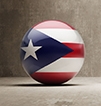>> View The Nation article detailing study
>> Watch Robert Pollin's lecture in Puerto Rico on austerity vs. green growth
Abstract
Puerto Rico is experiencing a severe economic and social crisis. The crisis conditions began emerging in the late 1990s after the collapse of a development model dependent on U.S. corporate handouts. The island is now saddled with an overwhelming and unpayable level of public debt. Various proposals for solving the crisis are now being fought over by the Puerto Rican government, its creditors, and the Financial Oversight Board established by the U.S. Congress in 2016 to manage the crisis. But the predominant idea guiding these discussions is an austerity agenda. Austerity policies in Puerto Rico now will deepen the crisis since it will lead to declining incomes, private spending and business sales, and a diminishing tax base for servicing debt. We develop a “green growth” program for Puerto Rico as an alternative to austerity. In its essentials, our green growth plan consists of two elements: large-scale annual investments in both energy efficiency and clean renewable energy. Through these investments, low-cost, domestically-produced clean energy will steadily supplant imported fossil fuels, with the target being that by 2050, clean energy sources will have replaced fossil fuels entirely in Puerto Rico. This green growth program is capable of delivering much lower energy costs on the island, while also steadily reducing, and finally eliminating altogether, its dependence on fossil fuel imports. The green growth program will also be a major new source of job opportunities and will create widespread opportunities for small-scale ownership forms to flourish within the island’s energy sector. Major debt write-downs will be necessary to enable the green growth program to move forward at a significant scale.



